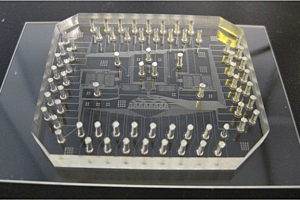Researchers from two universities and a research company have demonstrated an automated system that can analyze raw experimental biological data and derive the mathematical equations that describe the way the system operates. The team from Vanderbilt University in Nashville, Cornell University in Ithaca, New York, and CFD Research Corp. in Huntsville, Alabama published their results in the October issue of the journal Physical Biology (paid subscription required).
Vanderbilt biophysicist John Wikswo calls the complex scientific model the Automated Biology Explorer (ABE), which is based on Eureqa software developed by co-authors Michael Schmidt and Hod Lipson at Cornell’s Creative Machines Lab. Co-authors Jerry Jenkins and Ravishankar Vallabhajosyula at CFDRC also contributed to Eureqa.
The researchers applied ABE to the biological process glycolysis that produces energy in a living cell, specifically the way yeast cells control fluctuations in the chemical compounds produced by the process. ABE performed a virtual test on glycolytic oscillations, an extensively studied biological control system.
Jenkins and Vallabhajosyula at CFDRC used one of the process’s detailed mathematical models to generate a data set corresponding to the measurements a scientist would make under various conditions. To make the test more realistic, the researchers injected a 10 percent random error into the data. When they fed the data into Eureqa, it derived a series of equations that were nearly identical to the known equations.
The research group at Vanderbilt is currently developing microfluidics lab-on-a-chip technology (pictured at top) controlled by Eureqa. Adding the ability to directly test properties of fluid samples is expected to allow ABE to design and perform more types of basic biology experiments, starting with a test of cell metabolism, without human intervention.
Wikswo expects this development to alter the way biologists conduct their research. “Generally, the way that scientists design experiments is to vary one factor at a time while keeping the other factors constant,” says Wikswo, “but, in many cases, the most effective way to test a biological system may be to tweak a large number of different factors at the same time and see what happens. ABE will let us do that.”
Read more: Agencies Use Robotics to Test Chemicals for Toxicity
* * *


 RSS - Posts
RSS - Posts
You must be logged in to post a comment.